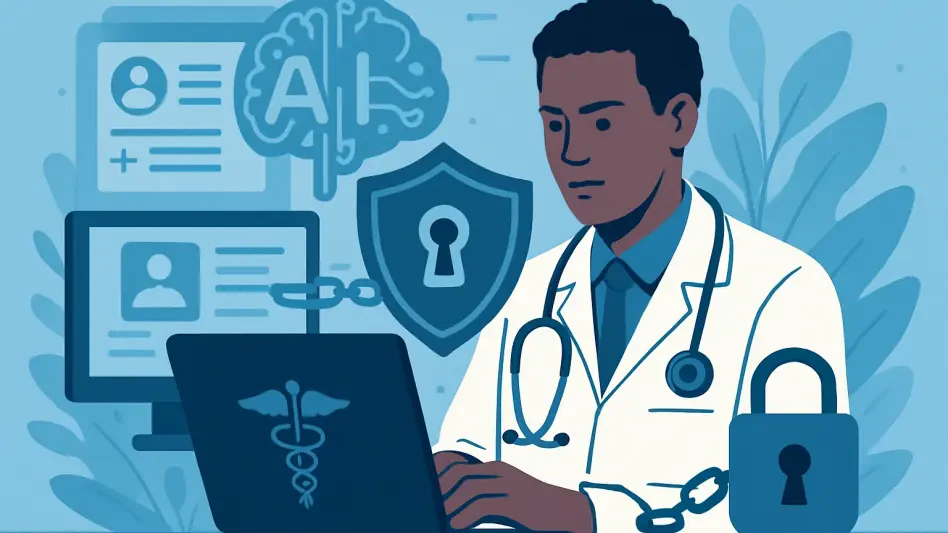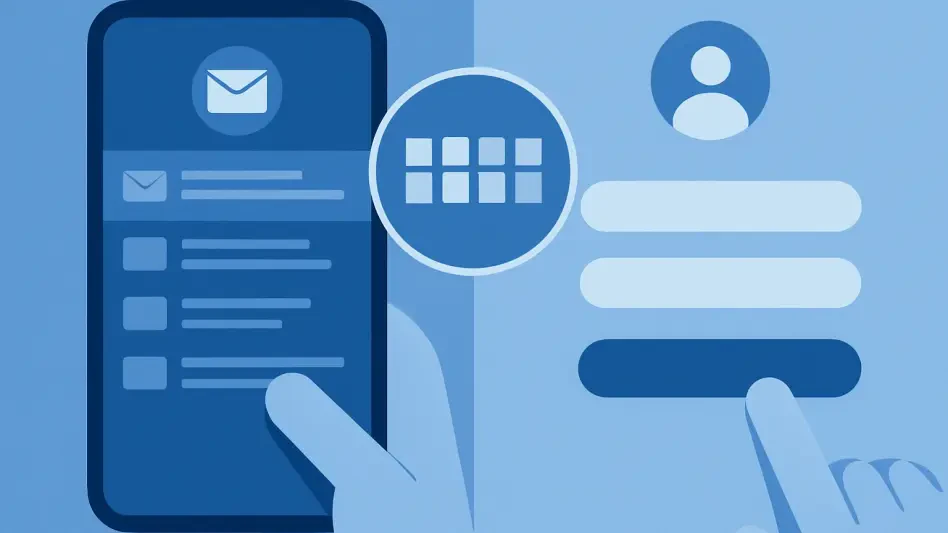In an era where healthcare increasingly relies on digital systems, safeguarding sensitive patient information has emerged as a paramount concern for organizations across the sector, with insider threats posing a particularly insidious risk. These threats, arising from employees, contractors, or vendors within an organization, often evade detection for extended periods, inflicting substantial financial and reputational harm. Statistics paint a stark picture: 37% of organizations find insider risks harder to pinpoint than external attacks, with breaches taking an average of 178 days to uncover. As the stakes continue to rise, artificial intelligence (AI) is stepping into the spotlight as a transformative force, offering innovative tools to detect and mitigate these hidden dangers. This article delves into the profound impact of AI on insider threat detection within healthcare, exploring how advanced technologies are reshaping security practices to protect critical data in an environment where trust and access intersect with vulnerability.
Unpacking the Growing Risk of Insider Threats
Healthcare institutions face a unique and escalating challenge with insider threats due to the sheer volume of sensitive data housed in electronic health records (EHRs) and the broad access granted to diverse staff members. Unlike external cyberattacks, which often leave clear digital footprints, insider risks—whether stemming from malice or negligence—blend seamlessly into everyday operations, making them notoriously difficult to identify. The scale of potential damage is staggering, as evidenced by the compromise of over 51 million medical records in the U.S. in a single year just a few years ago. Traditional security frameworks, built on rigid rules and manual oversight, frequently fall short in addressing these subtle breaches. This gap exposes a critical need for more sophisticated methods to protect patient information from internal vulnerabilities, especially as digitization expands the attack surface and amplifies the consequences of undetected threats.
The financial and ethical implications of insider threats in healthcare further underscore the urgency for enhanced defenses. Beyond the immediate costs of remediation, which can exceed $1 million for many organizations, breaches erode patient trust—a cornerstone of medical practice. With 51% of organizations reporting multiple insider attacks in a recent year, the frequency of these incidents reveals a persistent and pervasive problem. Compounding the issue, the time required to detect a breach often allows significant harm to unfold before intervention is possible. As healthcare providers grapple with balancing operational access with stringent security, the limitations of conventional tools become increasingly apparent. This environment sets the stage for AI to emerge as a pivotal solution, capable of addressing the nuanced nature of internal risks where human oversight and static systems struggle to keep pace.
Harnessing AI for Real-Time Threat Identification
Artificial intelligence is redefining security in healthcare by introducing real-time anomaly detection powered by machine learning algorithms. These systems meticulously analyze user behavior across various roles, establishing benchmarks for normal activity—such as typical login times or data access patterns—and flagging deviations that might indicate a threat. Unlike traditional methods that rely on predefined thresholds, AI adapts continuously, learning from new data to sharpen its accuracy over time. This dynamic approach significantly reduces false positives, ensuring that security teams are not overwhelmed by irrelevant alerts. In a sector where rapid response is critical to protecting patient data, AI’s ability to identify potential risks as they unfold offers a proactive edge, transforming how healthcare organizations anticipate and address internal dangers before they escalate into full-blown crises.
The precision of AI in real-time detection also alleviates the burden on IT departments, which are often stretched thin in healthcare settings. By filtering out noise and focusing on genuine anomalies, such as unauthorized access attempts during off-hours, these tools enable staff to prioritize actionable threats without disrupting clinical workflows. This efficiency is particularly vital in environments where every moment counts, and a delayed response could mean the difference between containment and catastrophe. Furthermore, AI’s capacity to integrate vast datasets—from login histories to file interactions—provides a comprehensive view of potential risks that manual monitoring could never achieve. As insider threats grow in sophistication, the deployment of AI for immediate identification marks a critical shift toward a more resilient security posture, safeguarding sensitive information in an increasingly complex digital landscape.
Contextual Risk Assessment Through Behavioral Analytics
AI goes beyond surface-level detection by employing behavioral analytics to provide deeper insights into user actions within healthcare systems. This technology constructs detailed profiles based on individual patterns, such as typical working hours, frequented systems, or interaction frequencies with specific data types. When a user deviates from their norm—perhaps accessing patient records from an unfamiliar device or location—AI evaluates the context of the action to determine its risk level. This nuanced assessment helps distinguish between benign anomalies and genuine threats, preventing unnecessary escalations. By embedding this level of intelligence, AI ensures that security measures are both precise and relevant, addressing the unique challenges of insider risks in a field where authorized access is often widespread and necessary for daily operations.
Moreover, behavioral analytics significantly reduces alert fatigue among security personnel, a common issue with less sophisticated systems that bombard teams with frequent, low-priority notifications. By prioritizing alerts based on contextual severity, AI allows IT staff to focus on high-risk incidents, maintaining operational efficiency in high-pressure healthcare environments. This targeted approach also fosters a better understanding of workforce behavior, enabling organizations to identify potential vulnerabilities before they are exploited. For instance, consistent deviations in a user’s activity might signal underlying issues like dissatisfaction or coercion, prompting preemptive intervention. As a result, AI-driven behavioral analytics not only enhances detection but also supports a more strategic allocation of resources, fortifying healthcare security against internal threats with unparalleled depth and foresight.
Scanning Communications with Natural Language Processing
Another powerful facet of AI in healthcare security lies in its use of natural language processing (NLP) to monitor text-based communications for potential risks. By analyzing content in emails, chat messages, and even clinical documentation, NLP can detect language that suggests malicious intent, policy violations, or plans to misuse sensitive data. This capability is particularly valuable in identifying subtle cues—such as expressions of frustration or references to unauthorized data sharing—that might precede an insider threat. Crucially, these tools can be tailored to respect privacy, focusing on metadata and risk indicators rather than personal details, ensuring compliance with stringent healthcare regulations. This ethical configuration allows organizations to strengthen their defenses without compromising the trust or confidentiality essential to patient care.
The application of NLP also extends to enhancing overall risk management by providing a broader perspective on organizational culture and communication trends. For example, recurring patterns of negative sentiment in internal correspondence might indicate systemic issues that could lead to insider actions if unaddressed. By flagging such indicators early, AI empowers administrators to intervene with training or policy adjustments, mitigating risks at their root. Additionally, the ability to process vast volumes of text in real time ensures that no potential warning sign goes unnoticed, even in large, complex healthcare networks. This comprehensive monitoring, balanced with a commitment to ethical standards, positions NLP as a vital component of AI-driven security, offering healthcare providers a sophisticated tool to protect against internal threats while maintaining the integrity of their operations.
Accelerating Response with Automated AI Systems
AI’s impact on insider threat detection in healthcare extends to its ability to automate responses, significantly enhancing reaction speed when risks are identified. Upon detecting a high-risk event—such as an unusual data download or unauthorized system access—AI systems can instantly lock accounts, restrict permissions, or escalate the issue to human analysts for further investigation. This rapid intervention minimizes the window of opportunity for damage, a critical factor in an industry where data breaches can have immediate and severe consequences. Recent data indicates that a substantial percentage of medical groups have expanded AI use for incident triage and automation, reflecting a broader trend toward reducing reliance on manual processes and bolstering efficiency in threat containment.
Automation also plays a key role in optimizing resource allocation within healthcare organizations, where security teams often juggle multiple priorities. By handling routine responses and initial assessments, AI frees up personnel to focus on complex cases that require human judgment, thereby improving overall response quality. This streamlined approach is especially beneficial in preventing the cascading effects of a breach, such as regulatory penalties or loss of patient confidence. Furthermore, automated systems can log and analyze incident details, providing valuable insights for refining future security protocols. As insider threats continue to evolve, the integration of AI-driven automation ensures that healthcare providers can respond with the agility and precision needed to protect sensitive data, maintaining operational continuity even in the face of sophisticated internal risks.
Fortifying Electronic Health Records with AI Integration
Electronic health records, the backbone of modern healthcare, represent a prime target for insider threats due to the wealth of sensitive information they contain. AI integration directly into EHR platforms offers a robust defense, continuously monitoring user interactions for signs of suspicious behavior, such as irregular access patterns or unauthorized modifications. These tools also automate compliance checks, ensuring adherence to regulatory standards without burdening staff with manual oversight. By embedding security within the systems that house critical data, AI enables early identification of risks, preventing breaches before they can compromise patient information. This seamless approach is essential as healthcare becomes increasingly digitized, with EHRs serving as both a vital resource and a significant vulnerability.
The benefits of AI in EHR protection extend beyond detection to fostering a culture of accountability and transparency within healthcare organizations. By tracking access and usage in real time, these systems deter potential insider misuse while providing a clear audit trail for investigations if incidents occur. Additionally, AI can flag anomalies like unusual billing activities, which might indicate fraudulent behavior, allowing for swift corrective action. This proactive safeguarding aligns with the sector’s dual imperative of maintaining patient care and data security. As threats grow more complex, the direct integration of AI into EHR platforms ensures that the most critical assets are shielded with cutting-edge technology, preserving trust and operational integrity in an environment where the stakes could not be higher.
Reflecting on AI’s Impact and Future Directions
Looking back, the adoption of AI in insider threat detection marked a turning point for healthcare security, addressing vulnerabilities that traditional methods struggled to contain. The journey revealed how machine learning, behavioral analytics, and automation reshaped the landscape, enabling organizations to stay ahead of internal risks with unprecedented precision. As these technologies matured, their integration into core systems like electronic health records solidified their role as indispensable defenses against data breaches. Moving forward, healthcare providers should focus on scaling AI implementations while prioritizing ethical considerations, such as privacy in communication monitoring. Investing in staff training to complement AI tools will also ensure a balanced approach, blending human insight with technological innovation. Ultimately, the path ahead lies in fostering collaboration between technology developers and healthcare leaders to refine these solutions, ensuring they evolve alongside emerging threats to protect patient data effectively.








